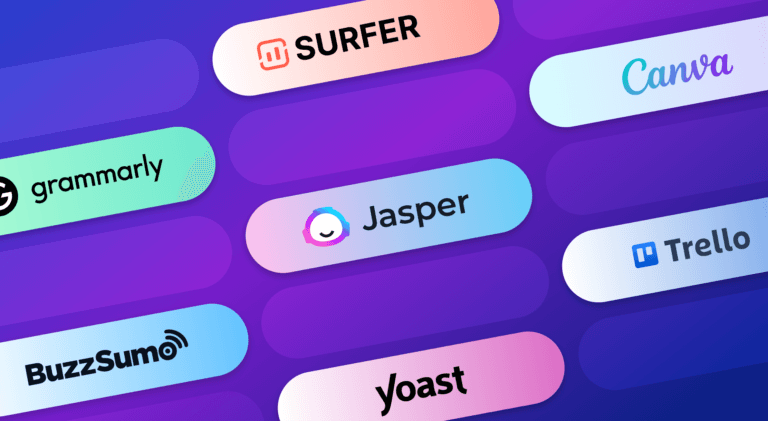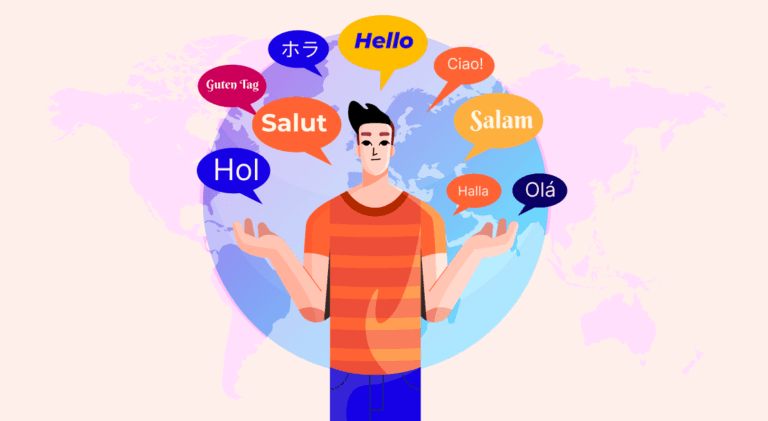Facebook Advertising Guide: All about Facebook Ads

Table of Contents
- What is Facebook Advertising?
- Why Should I Advertise on Facebook?
- The Pros and Cons of Facebook Ads
- Types of Facebook Ads
- How to Create a Facebook Ads Strategy?
- How to Create Your Own Facebook Ads?
- Key Takeaways
- Conclusion
- FAQs
With 2.8 billion monthly active users, Facebook is now one of the most popular advertising networks to suit a wide range of businesses. Its market share for digital advertising is close to 25% making it the second-largest online advertising platform after Google.
In truth, Facebook advertising is a powerful tool for marketers. If you want to get excellent results, it’s crucial to understand what Facebook advertising is, the different types of Facebook ads, and how to create them before you dive in.
This Facebook ads guide will talk all about Facebook ads from planning to developing and strategizing.

What is Facebook Advertising?
Facebook ads refer to online paid advertisements and promotions created and placed in the Facebook news feed by businesses. The advertising model functions on the ubiquitous “pay-per-click” model, where you also get to specify how much they want to spend, including the overall amount, daily budget, cost per click.
Plus, paid Facebook ads lets you target a particular demographic and can only be seen by the specific target audience that matters most to you. They are also open to emotive reactions, comments, and shares.
Why Should I Advertise on Facebook?
Most social media marketers believe that Facebook offers the highest return on investment (ROI) of all the platforms. There are several reasons to use Facebook advertising in your marketing mix strategy. Here are the main ones.
- Firstly, the targeting demographics of Facebook give you direction for your marketing, so you can build trust and authority with users that are more likely to be aligned with your products and services, with options as focussed as user gender, age, job title, and education.
- Secondly, when it comes to the average time spent on social media platforms daily, Facebook rules the list. An average user spends about 38 minutes a day on Facebook. The platform is dominant in other statistics, too, with approximately 2.8 billion monthly active users. What’s more, about 500 million people use Facebook stories daily. Facebook Messenger currently has 1.3 billion active users, and Facebook groups, which is one of the oldest platforms, has over 1.8 billion active users.
- Finally, over 1.6 billion users around the globe are connected to a business with Facebook. There are already 80 million small businesses that use Facebook’s free business tools. This is the most compelling argument and a good reason for getting started with Facebook advertising: you’ll get more visibility for your Facebook content and boost traffic to your website content.
Let’s dive deeper and learn all about Facebook ads, from the pros and cons of Facebook ads to the types of Facebook ads.

The Pros and Cons of Facebook Ads
To optimize your marketing strategy, it is essential to consider both the pros and cons of Facebook advertising before choosing it over other types of advertisement.
Pros
- Targeted reach
Facebook ads can target specific users by location, age, and gender. Besides, you can easily include and exclude people from your audience based on their demographics, interests, and/or behaviors and based on their connections to your Facebook pages. In addition, you can also create Lookalike Audiences based on a custom audience source that finds new people who are likely to be interested in your business because they share similar characteristics to the people in the source.
- Highly customizable ads
Facebook offers excellent customizability to the different types of advertisements you can create. Considering Facebook ads are also displayed on Instagram, you have much more opportunity and flexibility to create the ads that reflect your business and reach your customers where they spend most of their time. Even better, the customizability of Facebook ads makes it easier to try out different combinations and iterations that resonate with your target customers. For example, you can experiment between still picture content and video content or see if your customers are more likely to convert through Facebook’s newsfeed or Instagram stories.
- Easy set-up
While Facebook’s Business Manager tool requires a thorough and clear understanding to run to its full potential, the initial setup for your account is straightforward. Besides, active users’ extensive reach and flexible ads offer fast results.
- Easy to track and measure
One of the biggest pros of Facebook is the ease of tracking and measuring the results of your Facebook ads performance. You can easily track and measure by installing Facebook pixel to your website.
Cons
- Cost can increase
Facebook ads can be a little expensive if you’re unsure how much to bid. Ensuring you have a good bidding strategy or a sizable bidding budget is crucial in the long run to get your desired results. This is an important Facebook ad tip.
- Diminishing organic reach
Unless you’re creating Facebook paid ads, no one sees your content, which is one of the significant disadvantages of Facebook advertising.

Types of Facebook Ads
Facebook advertising offers several different types of ads to choose from.
These ads include the following:
Image ads
This is the most basic ad format and can be used to deliver simple messages. They contain a single static image and can be used in multiple ad placements. You can easily create an image ad and show off your products and services by boosting an existing post from your Facebook page. However, the image ad format can also be limiting and is not your best choice when you want to show how your product works or show off your product features.

Video ads
This ad format allows you to post a single video to market a product or service. In comparison to image ads, video ads drive high audience engagement. They can appear in the Facebook newsfeed, stories, or as in-stream ads in longer videos. Video ads can be used to demonstrate a demo of your product or service.

Carousel ads
This ad format uses up to 10 images and videos to demonstrate your product or service. Carousel ads are great to highlight a broad range of your products or even the benefits of one product. Each image or video can have its link tailored explicitly for that product. For example, the “Shop Now,” “Install Now,” or “View More” button leading to your product content can increase traffic to your website to purchase the product directly.

Collection ads
This ad format is an advanced version of carousel ads, only offered for mobile devices. They are more customizable and full-screen compared to the carousel ad format. Collection ads are perfect for large eCommerce stores to showcase their collection to customers to purchase a product or service. Customers can also shop without ever leaving Facebook, making the mobile shopping experience easy.

Video polls
This interactive ad format only appears on mobile devices. Video poll ads allow you to set up a poll while your video is playing. They are an easy and fun way to interact with your prospects in real-time while they’re watching your video. The poll link appears on the top right corner of Facebook from where your prospects can click and submit their replies.
Lead ads
This is another ad format that is only available for mobile devices. That’s because they’re specifically designed to acquire prospects’ contact information before ever having to leave Facebook. Lead ads are great for opening new avenues to connect with prospects by signing them up for a trial of your product or service and collecting newsletter subscriptions.
Dynamic ads
This ad format allows you to advertise targeted products to the potential customers most likely interested in them. For instance, they track the preference of a user who visited a page on your site but then abandoned the purchase in the shopping cart. Dynamic ads can remind the potential customer to complete the purchase by simply advertising that product in their Facebook feed.

How to Create a Facebook Ads Strategy?
Mastering how to leverage Facebook advertising is crucial to get started. Here is a breakdown of the Facebook advertising strategies and Facebook ad design tips to incorporate into your marketing mix.
1. Define your target audience
Pinpointing your specific audience most likely to buy your product or service is one of the biggest advantages of Facebook advertisements. Unlike other advertisement platforms, Facebook advertising lets you get granular with your ad targeting function, only promoting ads to relevant audience groups. You can target an audience based on specific features such as location, age, interests, and demographics. Once you understand how to find your target audience and/or who your target audience is, you can start pushing your ads to them to convert them into customers. It is one of the most important Facebook ad tips to consider while creating your strategy.
2. Set a goal
The second part of your strategy is to set a goal. There are many different types of Facebook ads to promote your business or message.
But before diving into creating ads, it’s important to determine your goals related to
Facebook advertising strategy.
- Brand awareness: Increasing your reach and bringing your brand to potential customers through Facebook advertising.
- Engagement: Increasing interactions between prospects and your marketing content.
- Conversions: Encouraging your potential customers to act such as buy a product or sign up for newsletters and converting them into full-fledged customers
- Page likes
- App installs
If you’re trying to increase engagement, for example, consider which type of Facebook advertising would help you to achieve this the best: would a video poll help catch your audience’s attention, or would a video ad work better?
3. Don’t abandon your organic reach
While paid ads strengthen your conversions, that’s no excuse to neglect your organic reach. Building organic reach is a long-term investment that can help you to strengthen the underlying relationships between you and your audience. It is another important Facebook ad tip to keep in mind while strategizing your Facebook advertising. Organic Facebook posting comprises posts and videos that are not promoted to reach the target audience. In short, there’s no money involved in organic posting.
You build an engaging environment on your Facebook page by crafting good content that draws in prospects. And when those prospects hit a like on your content or drop a comment and share your content, you start appearing in Facebook keyword searches as well as Google keyword searches. If you have a higher relevance score, you receive more benefits, and Facebook’s algorithm will reward you for that. Lastly, it helps save you money on advertising.
How to Create Your Own Facebook Ads?
Let’s walk through 6 important Facebook advertising design tips.
1. Choose the proper ad format for your audience and brand
As discussed earlier, choose the correct Facebook ad format based on your goals. If you’re trying to increase website traffic, for example, consider what ad format would help you achieve this the best.
2. Use the right images
You must use custom-made or carefully selected images in your ads that grab your audience’s attention and represent your brand or product. Use a high-quality image that clearly displays your product or service for the best results. Avoid too much text and give the image a clear focus. In addition, make sure that your image and video size and ratio are correct. Poorly formatted visual content can be distorted and difficult to see. With the proper sizing and ratio, you can avoid awkward margins and fit all the information you need.

3. Keep the landing in sync with your ad
Advertisements are a promise to readers: click here to view this. When designing your Facebook ad and landing page, make sure your Facebook ad and landing page design are visually synced so that viewers can easily transition from Facebook to your other resources. The landing page is important to convert prospects into customers, so don’t let your landing page let you down.
4. Include a clear CTA
Include a clear and to-the-point call-to-action (CTA) button to grab your audience’s attention. For example, “Shop Now” CTA is an excellent value-added prop to encourage the audience to visit the brand’s website or the landing page and increase traffic and engagement.

5. Design for mobile
According to the 2020 survey, 79% of Facebook users accessed Facebook only from their mobile devices. Thus, your Facebook ad design strategy needs to be mobile-friendly to gain the best returns on investment. Considering vertical images and videos work better on mobile phones, start creating your Facebook ad content vertically to take the full advantage.
6. Apply overlaying text
Adding some text to your image is powerful. But avoid crowding your image with too much text. While creating your ad, carefully choose the text you’ll include because when users scroll their feed, your ad needs to tell them why they should explore your brand or product further.

Key Takeaways
- Facebook ads bring in great results in terms of ROI compared to other online advertising platforms.
- Facebook paid advertising is considered a standalone activity most of the time.
- Always start with a low budget before you increase your ad spend.
- If you are using a specific image to promote your product in a Facebook ad, the landing page needs to have that same product image. Your content on Facebook and the landing page should sync visually.
- Create mobile-friendly ads.
Conclusion
Good Facebook advertising helps you grab attention and tell a story. This blog, which was all about Facebook ad design tips and information can help you do that if you put them together in the best way possible for your brand.
It’s important to keep in mind that design is just one part that makes an ad work. Good results also require a strong Facebook advertising strategy and engaging copy to deliver the best results.
FAQs
Facebook advertising is 100% worthy. It helps you to reach a wider audience and generate new leads. Facebook advertising is the second most popular online advertising platform after Google, and most companies invest in it to stand out from their competitors.
Yes. Facebook ads can be a difference-maker for your small business. It can help you reach your target customers and grow awareness of your business.
The carousel ad is the most effective format for Facebook advertising. They are more interactive than static images or videos and create more engagement.
Both Facebook and Google are the biggest players in the market when it comes to paid advertising. A blended approach can yield the best results. It should not be Facebook or Google; instead, it should be Facebook and Google.
The average cost-per-click is somewhere between INR. 0.51 to INR. 2.26. However, your cost of ads depends on several factors.
Latest Blogs
Explore how Google’s 2025 AI search updates triggered ranking chaos. Learn actionable strategies to adapt your SEO for AI Overviews, zero-click searches, and SERP volatility. Stay ahead now.
Learn how to rank on AI search engines like ChatGPT, Perplexity, and Gemini by optimizing your content for authority, structure, and relevance. Stay ahead in AI-driven search with this strategic guide.
Explore the best healthcare SEO services for your medical practice. Improve online visibility and effectively reach more patients in need of your services.
Get your hands on the latest news!
Similar Posts

Artificial Intelligence
5 mins read
Enhance Your Writing Efficiency: Must-Have Content Writing Tools for Marketers

Marketing
5 mins read
9 Key Strategies To Increase Twitter Reach

Marketing
6 mins read